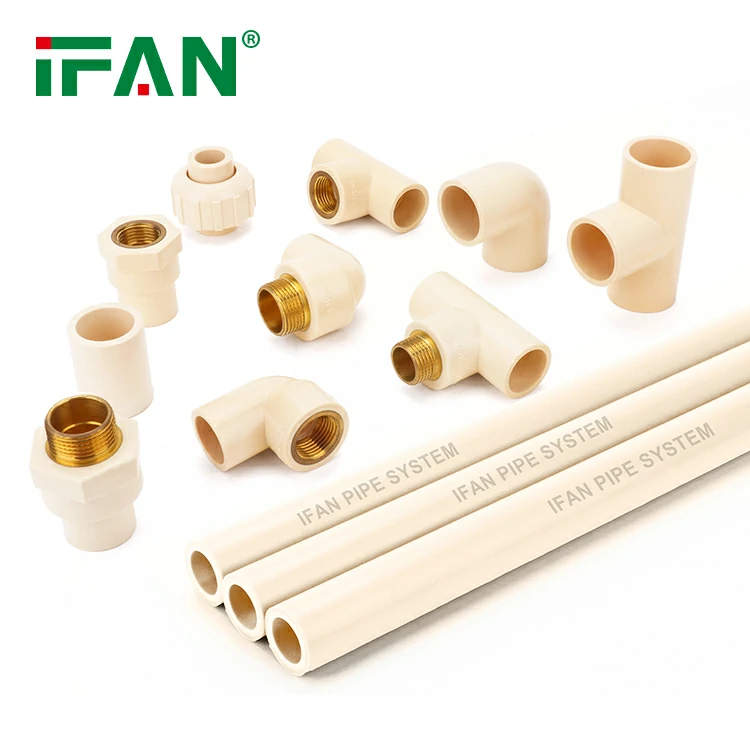Fundamental Thermal Characteristics
CPVC pipe fittings begin softening at 93-115°C (200-240°F). Complete melting occurs between 230-260°C (446-500°F). The chlorination process enhances thermal stability compared to standard PVC materials.
Industry Standard Testing Protocols
ASTM D1525 measures Vicat softening points.
ASTM D648 determines heat deflection temperatures.
Laboratory tests confirm CPVC fittings withstand 200°C briefly without deformation.
Key Influencing Factors
Chlorine content (63-69% optimal range) affects performance.
Wall thickness impacts heat resistance significantly.
Thicker 3mm fittings tolerate 15°C more heat than 2mm versions.
Practical Application Limits
Continuous service maximum: 82°C (180°F).
CPVC pipe fittings Short-term peak tolerance reaches 100°C for 4-6 hours.
Sustained 121°C exposure causes irreversible damage.
Comparative Material Analysis
CPVC outperforms PVC by 40°C in thermal resistance.
It exceeds PP-R by 15°C in melting points.
Copper melts higher but corrodes faster in acidic conditions.

Installation Temperature Guidelines
Never expose to torch flames beyond 5 seconds.
Safe ambient range: -40°C to 60°C.
Hot climates require reflective insulation wraps.
Thermal Failure Mechanisms
Visible distortion begins at 150°C.
Chemical decomposition accelerates above 200°C.
Complete structural failure occurs beyond 260°C.
Safety Standards Compliance
Modern fire protection systems incorporate multiple thermal safety margins to ensure reliable operation under extreme conditions. The NFPA 13 standard specifically mandates that automatic sprinkler systems maintain operating temperatures below 93°C (200°F) to prevent premature activation during non-fire thermal events. This temperature ceiling accounts for potential heat buildup in ceiling spaces while remaining below common thermal trigger thresholds.
The American Society of Mechanical Engineers (ASME) establishes more stringent requirements for material selection, requiring all system components to maintain structural integrity at temperatures at least 20°C (36°F) above their documented Vicat softening points. This buffer prevents deformation during:
- Pipe thermal expansion
- Steam exposure
- Solar heat gain on exposed piping
- Mechanical room temperature fluctuations
Industry best practices further recommend maintaining a 50°C (90°F) safety margin below the actual melting point of all polymeric components. This accounts for:
- Cumulative thermal aging effects
- Chemical degradation from water treatment additives
- Unanticipated heat sources near concealed piping
- Regional climate extremes exceeding design parameters
These layered safety factors work synergistically to ensure sprinkler systems remain operational throughout their service life while preventing material failures during fire events. The 93°C operational limit, 20°C softening point buffer, and 50°C melting point margin collectively form a robust thermal management framework recognized in international building codes.

